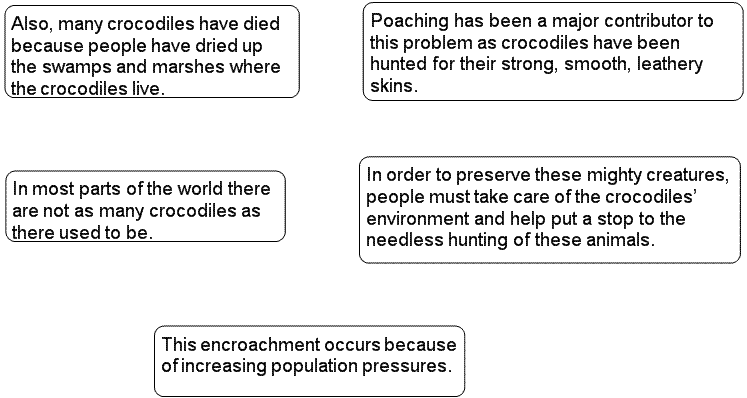The Science Of Scientific Writing Set A Intro to Paragraphs Features of Maps Examples of Maps Exercise 1 Quiz Diverse Organising Principles Example Exercise for Exercises 2-4 Exercise 2 Exercise 3 Exercise 4 Adding Non-core Content Exercise 5 Exercise 6 Exercise 7 *Exercise 8* Final Page.
OVERVIEW: The way to well-written science
PART I: Paragraphs and Sentences
SET A: Paragraphs: The Maps Behind Them
SET B: Paragraphs: Using Maps to Meet Readers' Expectations
SET C: Paragraph Coherence and Cohesion
SET D: Sentences
SET E: Scientific Sections (including Methods)
SET F: Scientific Sections: The Discussion
SET G : Scientific Sections: The Introduction
SET H : The Paper as a Whole
Exercise 7
1. Drag the image of the sentences below onto the Rationale Workspace, and then rearrange the individual sentences into a nested diagram.
2. Determine the main type of discourse used in this map, and make a note of this on the Rationale workspace.
- Description/Report
- Argument
- Explanation
3. If there are any boxes that contain content that is non-core (that is of a type different from the main discourse mode) change its Rationale box-type to a yellow "Note" (as in this map).
4. Now, in Rationale, add in at least one extra box of content that is of a type different from the main discourse mode (i.e. non-core). Create it as a yellow Rationale Note.
......
